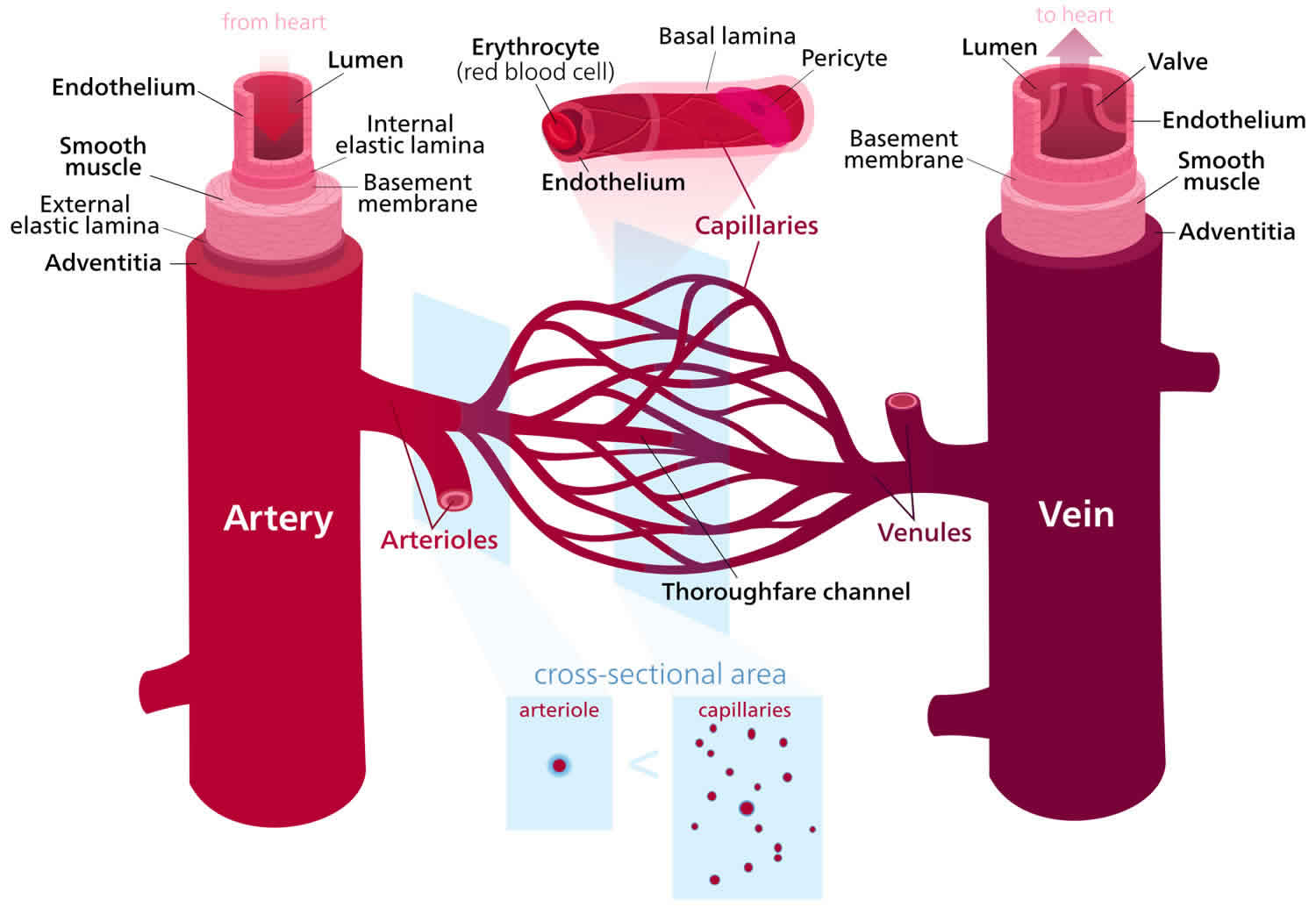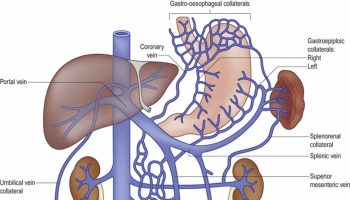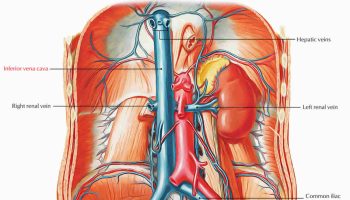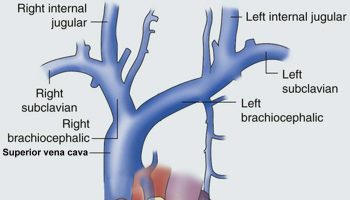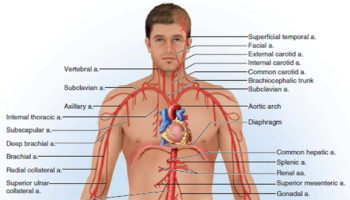What is vasodilation
Vasodilation is the widening of blood vessels or an increase in blood vessel diameter. Vasodilation increases blood flow in the body to tissues that need it most. Vasodilation results from relaxation of smooth muscle cells within the blood vessel walls, in particular in the large veins, large arteries, and smaller arterioles. The process is the opposite of vasoconstriction, which is the narrowing of blood vessels.
The primary function of vasodilation is to increase blood flow in the body to tissues that need it most. This is often in response to a localized need for oxygen but can occur when the tissue in question is not receiving enough glucose, lipids, or other nutrients. Localized tissues have multiple ways to increase blood flow, including releasing vasodilators, primarily adenosine, into the local interstitial fluid, which diffuses to capillary beds, provoking local vasodilation. Some physiologists have suggested that it is the lack of oxygen itself that causes capillary beds to vasodilate by the smooth muscle hypoxia of the vessels in the region. This latter hypothesis is posited due to the presence of precapillary sphincters in capillary beds. These approaches to the mechanism of vasodilation are not mutually exclusive.
When blood vessels dilate, the flow of blood is increased due to a decrease in vascular resistance and increase in cardiac output. Therefore, dilation of arterial blood vessels decreases blood pressure. The response may be intrinsic (due to local processes in the surrounding tissue) or extrinsic (due to hormones or the nervous system). In addition, the response may be localized to a specific organ (depending on the metabolic needs of a particular tissue, as during strenuous exercise), or it may be systemic (seen throughout the entire systemic circulation).
Endogenous substances and drugs that cause vasodilation are termed vasodilators. Such vasoactivity is necessary for homeostasis (keeping the body running normally). In tissue that is ischemic, vasodilation can be induced to enhance the effects of radiotherapy by increasing the delivery of oxygen and blood to the target.
Does vasodilation increase blood pressure?
No. Peripheral vascular resistance (systemic vascular resistance) is the resistance in the circulatory system that is used to create blood pressure, the flow of blood and is also a component of cardiac function. When blood vessels dilate (vasodilation), this leads to a decrease in systemic vascular resistance. Some blood pressure medications are called vasodilators. Medications to lower peripheral vascular resistance include beta-blockers, diuretics, ACE-inhibitors, calcium-channel blockers, and alpha-blockers.
